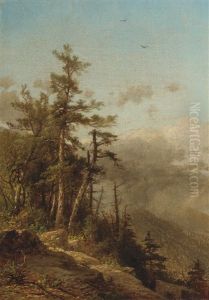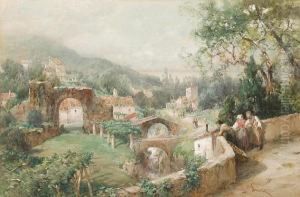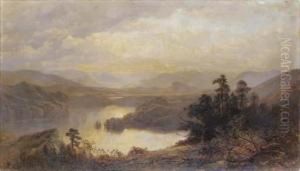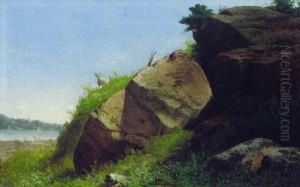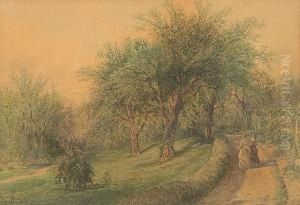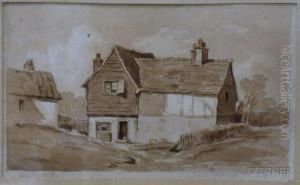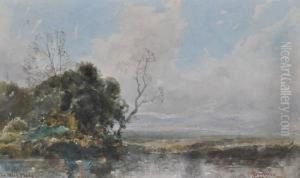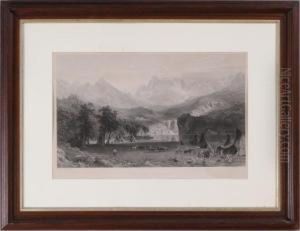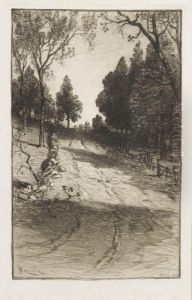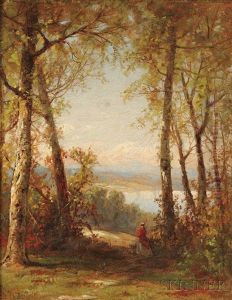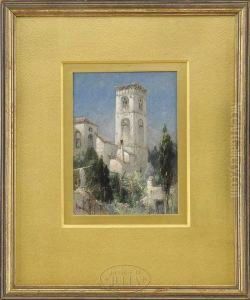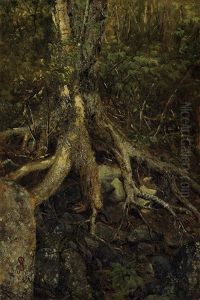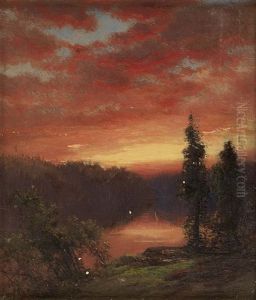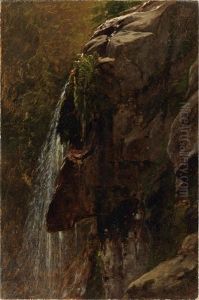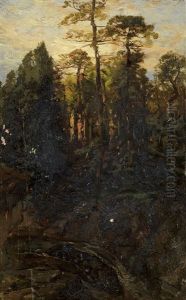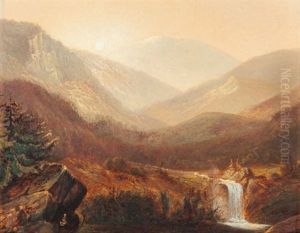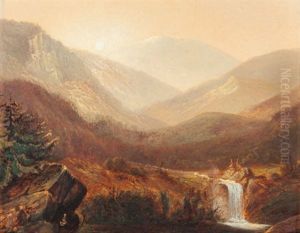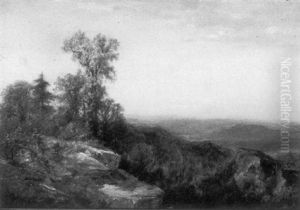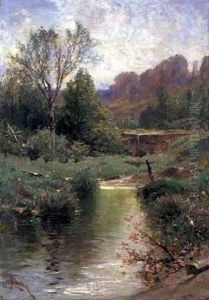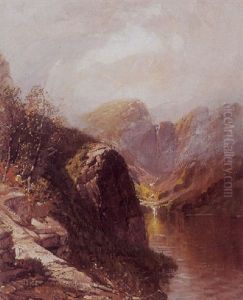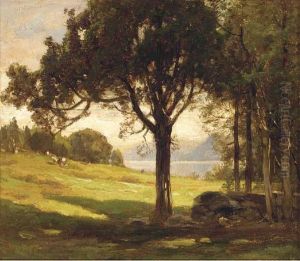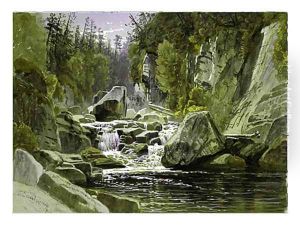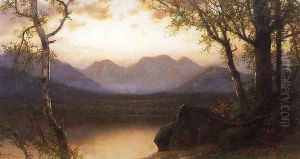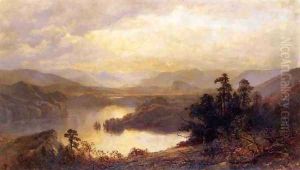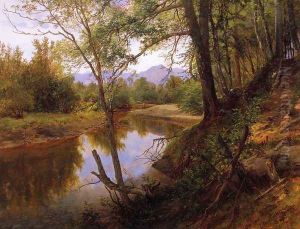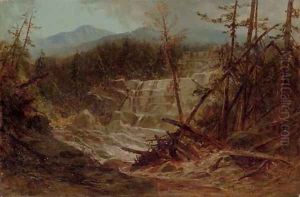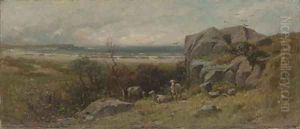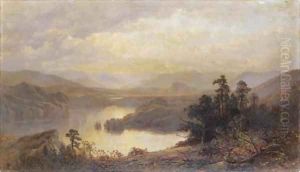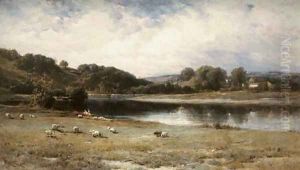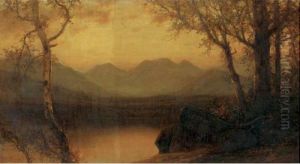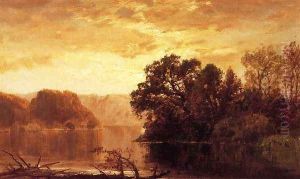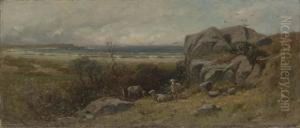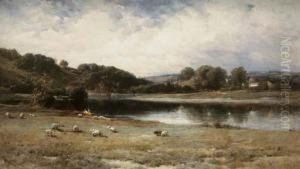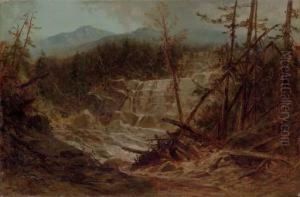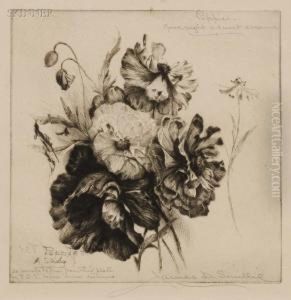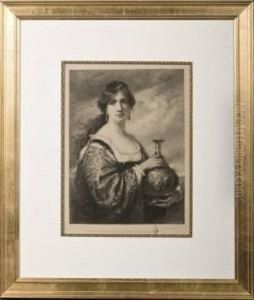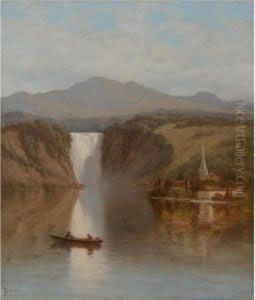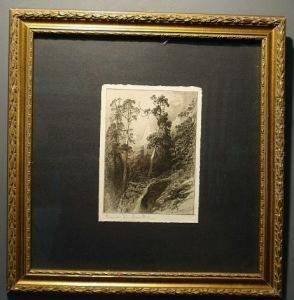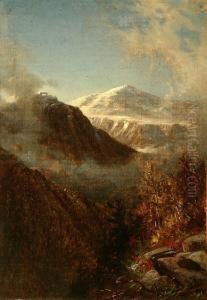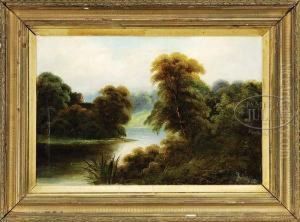James David Smillie Paintings
James David Smillie was a notable American artist, born on January 16, 1833, in New York City. He came from a family with a strong artistic background, as his father, James Smillie, was a respected engraver and his brother, George Henry Smillie, was a landscape painter. James D. Smillie initially followed in his father's footsteps, training as an engraver and earning recognition for his banknote designs and his reproductions of famous paintings.
During the 1860s, Smillie shifted his focus to painting and became well-known as a landscape artist, working primarily in oils and watercolors. He was particularly adept at capturing the American West's rugged beauty, which he encountered during his travels. Smillie's work often reflected a romantic view of nature, a characteristic of the Hudson River School, although he was not formally associated with this group of artists.
Aside from painting, Smillie was also an accomplished etcher and helped to revive interest in etching in the United States. He was a founding member of the New York Etching Club in 1877 and was influential in establishing etching as a respected form of art during the late 19th century.
Throughout his career, James D. Smillie was an active member of various art organizations. He served as the vice president of the National Academy of Design and was also involved with the American Watercolor Society. His contributions to the art world were not limited to his own creations; he also played a significant role in organizing exhibitions and promoting the work of other artists.
James David Smillie's art can be found in numerous public collections, including the Metropolitan Museum of Art and the Smithsonian American Art Museum. He continued to create and exhibit his work until his death on September 14, 1909, in Bronxville, New York. His legacy lives on through his diverse body of work, which captures the spirit of America during a time of significant change and expansion.
